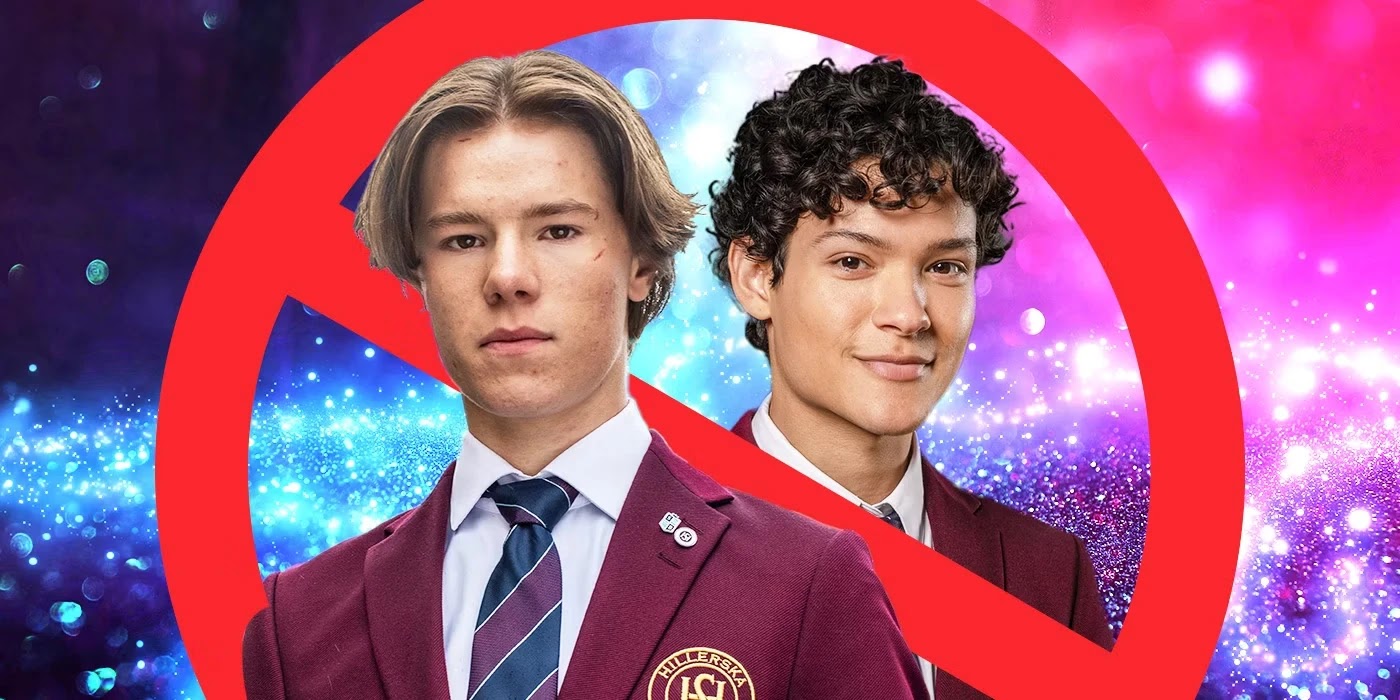Netflix’s Young Royals has officially concluded after three brief seasons. The premise of the Swedish LGBTQ+ adolescent drama, about a royal prince attending a boarding school, made it seem like an absurd, monarchist fantasy, especially since it premiered among contemporaries like Generation, Love, and Victor (which is also a spin-off). But with a remarkably realistic and true first season, the show defied expectations and gained a large and devoted global fan base. Unfortunately, the second season of Young Royals featured teenage soap opera clichés like love triangles. However, the final season triumphantly returned by focusing on the adult, intersectional subjects that Young Royals has always been about.
Contents
What’s Up With ‘Young Royals’?
The following are Young Royals’ fundamentals: Second in line for the Swedish throne, the pubertally disturbed young Prince Wilhelm (Edvin Ryding) is sent to a conventional boarding school following another public altercation. He is initially resistant to the new surroundings, but he quickly warms up to Simon (Omar Rudberg), a Latino scholarship student. Wilhelm’s elder brother meets a tragic end in an automobile accident, and he is abruptly elevated to the position of heir presumptive. Even worse, August (Malte Gårdinger), the royal cousin and bully, covertly records and publishes a video of Wilhelm and Simon having sex, causing a stir in the public. Wilhelm must now decide between accepting his actual self and denying his love in order to defend the kingdom.

Young Royals’ third season picks us up to the point where Wilhelm has courageously and ultimately acknowledged his part in the sex scandal. Now that they are free to love one another and are no longer in the closet, he and Simon face new difficulties. As the Crown Prince’s new boyfriend, Simon is having a hard time adjusting to all the rules and restrictions that come with being in the public eye. at addition to feeling financially and politically out of place at the royal court, he receives advice to ignore the deluge of homophobic comments and harassment he encounters online. The question posed by the show’s third season is whether Wilhelm and Simon’s intense love can withstand these difficulties—all of which are a result of their radically dissimilar upbringings.
“Young Royals” Achieves Success with Its Cross-Over Themes
Young Royals was already more adult than its contemporaries. Young Royals evidently had no interest in the sanitised and carefree world of modern LGBTQ+ teen TV, as the show’s two seasons revolved around a child porn plot. Surprisingly, the third season quickly wraps up the plot—a sombre, realistic tale involving settlements rather than justice—and gets back to what the show has truly always been about. The narrative has always been about monarchy vs. love, upper class vs. working class, and most crucially, Wilhelm’s choice, as the finale makes very evident.

Young Royals lacks any notion of balance. Even if given the opportunity to be together for good, Wilhelm and Simon are unable to move on in their relationship since they have not addressed or even sought to settle their class inequalities. Class emerges as the recurrent topic throughout the season, with monarchy serving only as a means to portray the upper socioeconomic strata into which Wilhelm was born.

“Young Royals” Deals with Multiple Issues at Once
Young Royals’ maturity allows the show to address multiple themes at once. Although they frequently only address one mature theme at a time, other LGBTQ+ teen shows occasionally address more than one. For instance, Nick and Charlie’s primary struggles in Heartstopper (perhaps Young Royals’ closest rival) are coming out and discovering one’s sexuality, which are undoubtedly worthwhile topics to investigate. The LGBT media has been deeply ingrained in coming-out tales for the past 20 years, but Young Royals isn’t content with that; in addition to coming out publicly, there’s the extra burden of class and colour. Consider the tokenistic treatment of intersectionality in Love, Victor. Problems like Benji’s drinking are brought up at random, and in spite of Despite the fact that Victor and Benji are biracial, their main issue appears to be the different ways that they have had sex. Young Royals’ writing is brilliant because all of its tales are tightly connected to one another, reflecting the way queerness and other real-world concepts operate.



Also Read
- Edvin Ryding, Young Royals, requests that people refrain from criticising his appearance: “You make me uncomfortable
- Filming for the third and final season of Young Royals has begun. The set’s initial images
- Royal Dilemmas Unfold in ‘Young Royals’ Season 3: Official Trailer Out Now!
- Young Royals’ Works Because It’s Not Like “Heartstopper” or “Love, Victor

